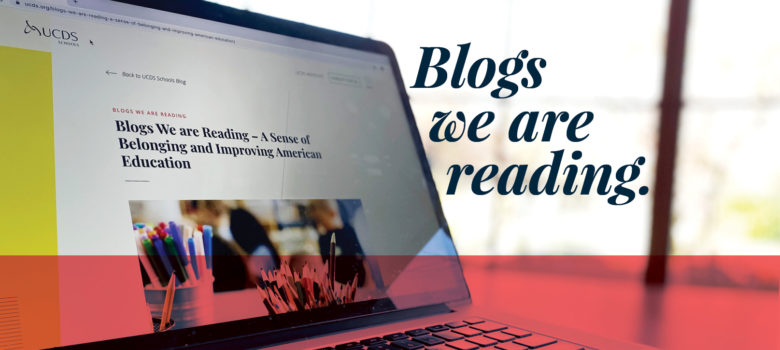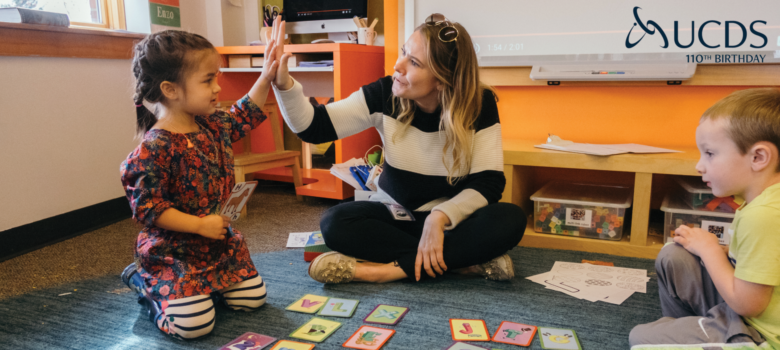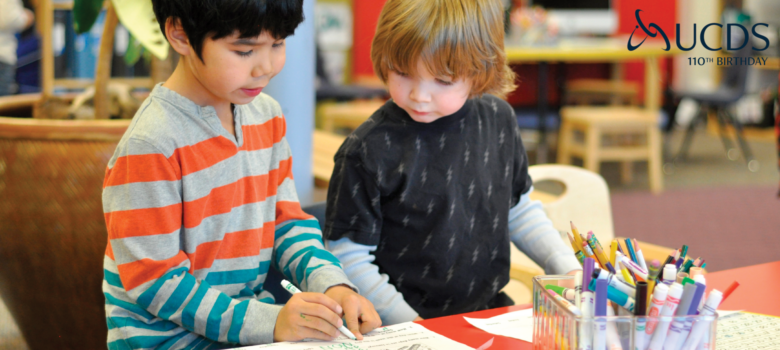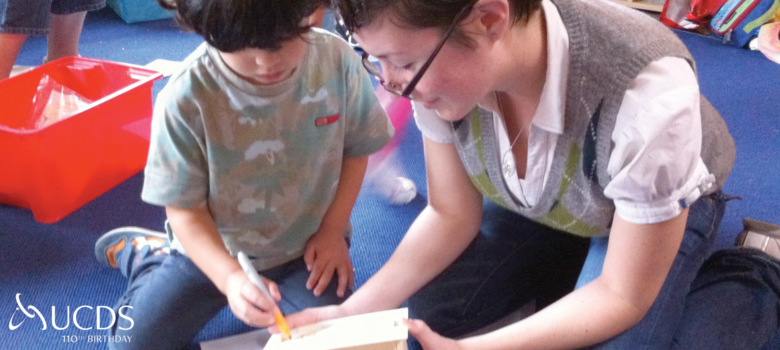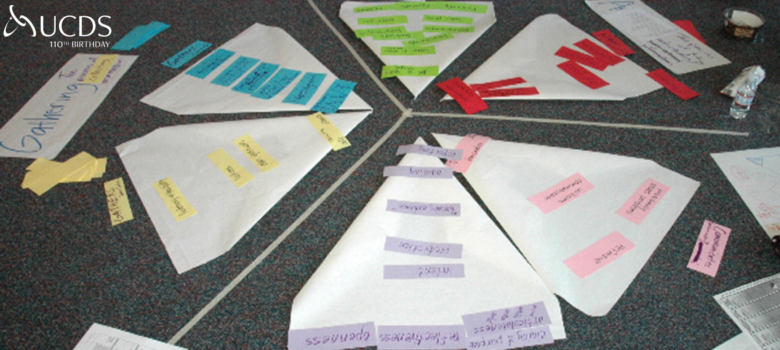by Louise Conway, Learning Support Teacher
An article came across my screen that immediately resonated with me and my experiences teaching math at UCDS. Kara Newhouse discussed the idea of applying the concept of “Rough Draft Thinking” to the instruction and study of math with Amanda Jansen, a University of Delaware math education researcher, and author of the book Rough Draft Math: Revising to Learn.
Rough drafting is ubiquitous in writing instruction and practice—the idea that any piece of writing benefits from rereading, reflection, feedback and revision is something that we start teaching children from a very young age. It makes one wonder: if we aren’t expecting a finished product from our emerging writers, why are we expecting it from budding mathematicians?
If you’ve had the chance to participate in UCDS’s Math Workshop, you know why this more process-driven approach to math stood out to me. As a new teacher, when I took Math Workshop, I was excited by the reframing of math as a guided exploration rather than a performance of memorized tasks. As someone who always struggled with memorizing math facts and algorithms, this appealed to me on a personal level. As a new teacher who believed strongly in preserving and honoring the curiosity of kids, I appreciated the idea that if we remove the performance demands of math instruction, we could ask students to take on bigger concepts and explore them from a very young age.
Jansen’s description of teachers who embrace the rough draft philosophy is what you’ll see in math conversations at UCDS: “If we shift our role as a teacher from an evaluator to more of someone that’s making sense out of ideas along with people, that’s a very different way of interacting.” She also discusses the importance of sharing one’s work, another important step in the UCDS Math Vitamin process. “Every time we’re being asked to articulate our thinking we make new connections or crystallize our ideas just by trying to put them into words or trying to put them into writing.” At UCDS, once a student completes the initial building and drawing steps of a Math Vitamin, they are asked to record with an equation and then share what they learned with a teacher and often with a peer. As students’ writing skills grow, they are asked to write about their learning as an integral piece of the documentation process.
Reflecting on their learning is often a part of this writing process. As Jansen discusses why this is important, I learned more about the science of why we ask students to think back on the learning process. “There’s a phenomenon that when you understand something new and you develop a deep understanding for it, you feel like you’ve always known it. Honoring that history of how the idea came to evolve helps you when you hit a new topic that’s very amorphous and challenging to understand. It normalizes and reminds you about the ongoing learning process.”
One of the statements that stood out the most to me is actually not about students at all, but about how rough draft thinking supports teachers. “I’ve found that if I treat my work as a teacher as a draft, then a misstep is a learning opportunity, not something to get frustrated about.” I was lucky that I developed and continue to hone my teaching craft at UCDS, a place that lives and breathes a growth mindset, so the idea that teachers are continually observing, reflecting and revising their approach is not new to me. But, it never hurts to be reminded that modeling authentic learning with tolerance for the process is beneficial for both students and teachers alike.

